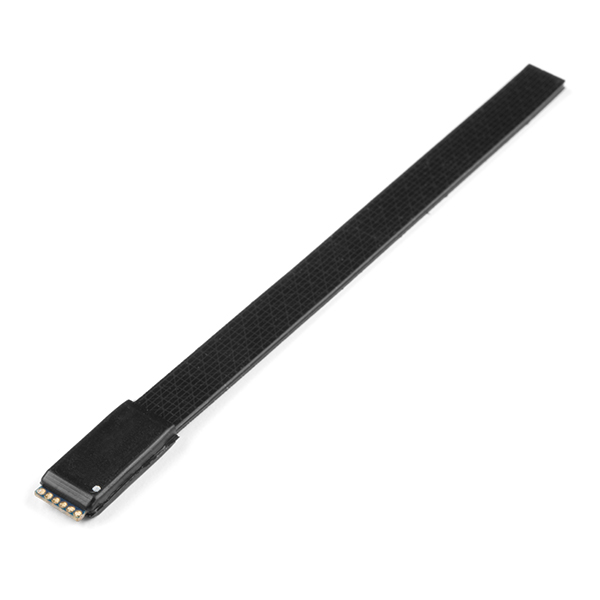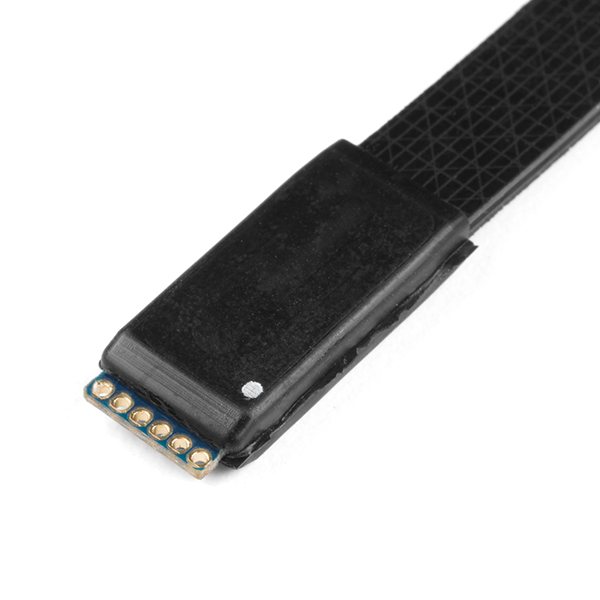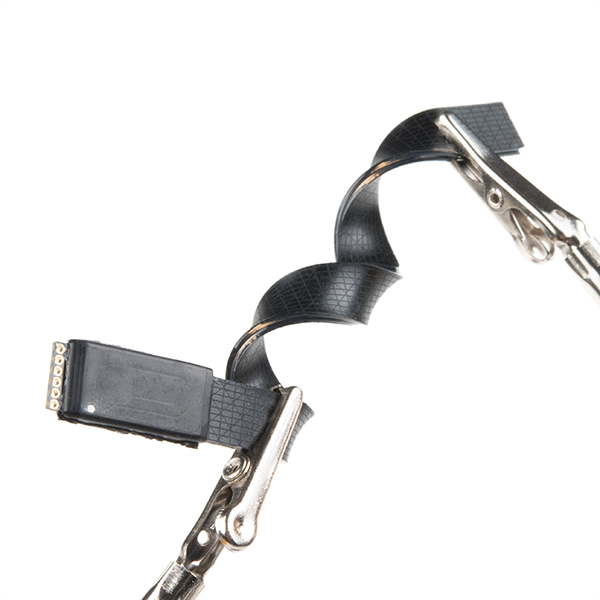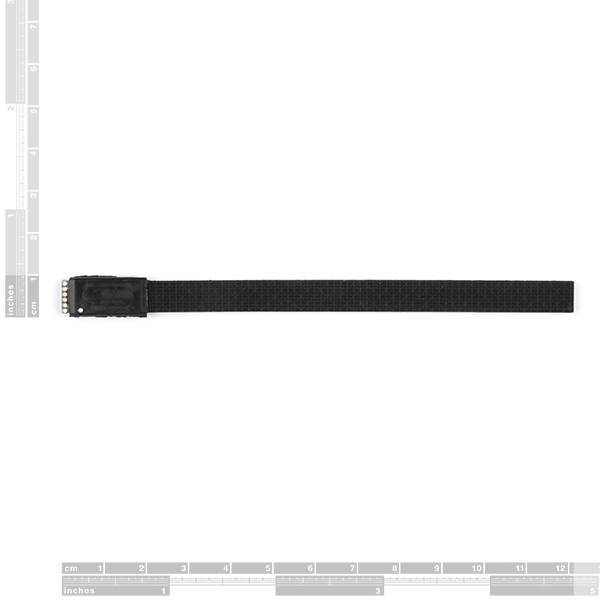Bend Labs Digital Flex Sensor - 1-Axis, 4 Inch
The Bend Labs Digital Flex Sensors are an innovative solution for measuring motion, providing a unique alternative to existing sensor technologies for measuring a highly accurate and drift-free angular displacement in a soft form factor while maintaining extremely low power consumption. Constructed using highly durable, medical grade silicone elastomers, this is a single axis bidirectional flex sensor which measures one angle for 2D orientation. Its low-power, integrated analog front end, with I2C interface, provides angular displacement data in degrees and includes onboard calibration and bootloader.
The angular displacement is path independent, meaning extraneous bending is rejected. Common mode signals such as stretching and temperature fluctuations are also rejected, providing a high fidelity measurement of angular displacement ideal for a wide variety of applications. This sensor requires 1.62-3.6V regulated supply for proper operation. Python example showing how to bend in real time.
- Highly flexible, soft, silicone elastomers for unrestricted bending
- Water/weather resistant and highly durable
- Onboard calibration and bootloader
- Sensitivity: 0.016° LSB
- Voltage: 1.62-3.63V
- Output: I2C
- Power Consumption @ 3.3V
- 200uA @ 100Hz
- Active run down to 97uA
- 1.7uA suspended
- 50nA shutdown
- Power Consumption @ 1.8V
- 183uA @ 100Hz
- Active run down to 78uA
- 1.7uA suspended
- 50nA shutdown
- Dimensions: 100mm x 7.62mm x 1.27mm
- Life Cycle: >1M cycles
Bend Labs Digital Flex Sensor - 1-Axis, 4 Inch Product Help and Resources
Core Skill: Soldering
This skill defines how difficult the soldering is on a particular product. It might be a couple simple solder joints, or require special reflow tools.
Skill Level: Noob - Some basic soldering is required, but it is limited to a just a few pins, basic through-hole soldering, and couple (if any) polarized components. A basic soldering iron is all you should need.
See all skill levels
Core Skill: Programming
If a board needs code or communicates somehow, you're going to need to know how to program or interface with it. The programming skill is all about communication and code.
Skill Level: Competent - The toolchain for programming is a bit more complex and will examples may not be explicitly provided for you. You will be required to have a fundamental knowledge of programming and be required to provide your own code. You may need to modify existing libraries or code to work with your specific hardware. Sensor and hardware interfaces will be SPI or I2C.
See all skill levels
Core Skill: Electrical Prototyping
If it requires power, you need to know how much, what all the pins do, and how to hook it up. You may need to reference datasheets, schematics, and know the ins and outs of electronics.
Skill Level: Rookie - You may be required to know a bit more about the component, such as orientation, or how to hook it up, in addition to power requirements. You will need to understand polarized components.
See all skill levels
Comments
Looking for answers to technical questions?
We welcome your comments and suggestions below. However, if you are looking for solutions to technical questions please see our Technical Assistance page.
Customer Reviews
No reviews yet.





(I believe, that is just how the Markdown gets interpreted (shrug?). It should work fine if the quote isn't the first entry of your comment.)
I think the restriction is a non-compete type of agreement... as in Bend Labs is offering customers to "play" with their technology, but customers cannot use it to develop products for commercial applications (their primary market space).
Can I buy straight break away headers so I can connect this to a custom board? The pitch appears to be about 1.058 mm which I can't find anywhere. Or in other words, anything that will help me connect this to a board.
Unfortunately, there aren't any headers in our catalog that will fit the spacing on this product.
You can try a parts distributor (i.e. Digi-Key or Mouser) to see if they have something; otherwise, you might be stuck with having to solder directly to the part or finding a custom parts manufacturer.
is there any way to hook it up directly to Arduino without SparkFun Pro nRF52840 Mini?
Hi there, it sounds like you are looking for technical assistance. Please use the link in the banner above, to get started with posting a topic in our forums. Our technical support team will do their best to assist you.
That being said, I am a little confused by your question: